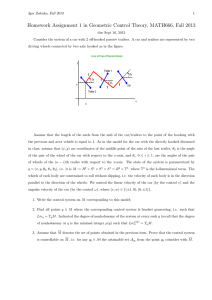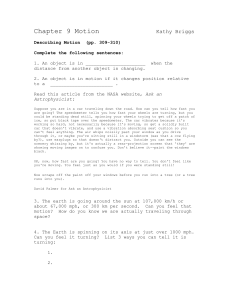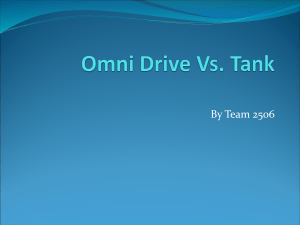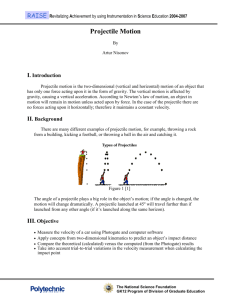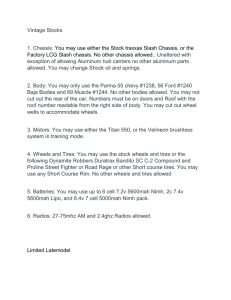Mousetrap Car Project
advertisement
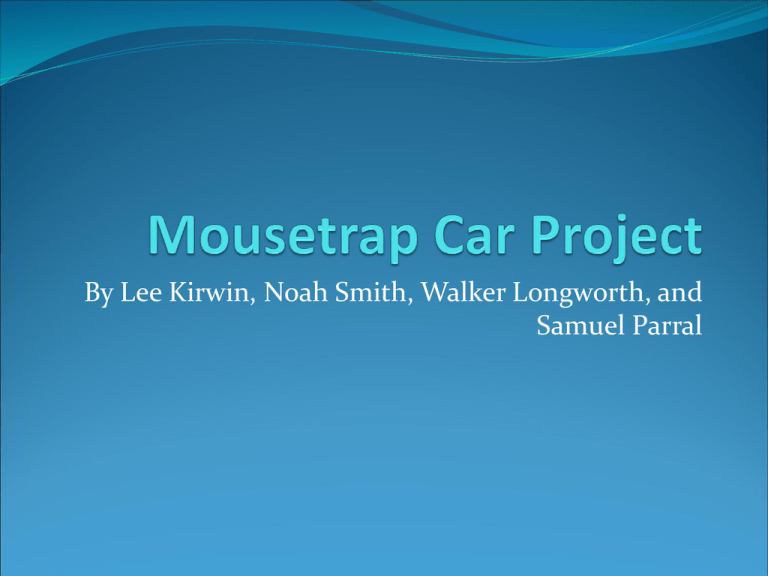
By Lee Kirwin, Noah Smith, Walker Longworth, and Samuel Parral Task Outline Noah Smith – Team Project Coordinator Samuel Parral – Design Coordinator Walker Longworth – Testing Coordinator Lee Kirwin – Presentation Coordinator Design Flowchart First our group decided what kind of car we wanted to build. We decided to compete with a car designed for distance. After we have all of our materials we will cut them all to shape and size. After we had the initial chassis built we built the mousetrap device using hot glue, tape, rubber band, and a fishing pole. After talked about the kind of car we wanted to design and build, our design Coordinator started designing our car on AutoCAD. When we have our materials cut to size and our wheels in place, we will start the assembly. Our first test went well we wound the string around the axel and let go. It went further than we thought it would go. After we have our design, we will get all of our materials. We started to put our materials into a car. We used the wood and straws and pieces of a fishing rod for the axels and chassis. We made some revisions and tested it again. Labeled design schematic Design We thought over the design of our car, and eventually agreed that the fishing pole would work best with the mousetrap for power. We had to eliminate problems such as a weak chassis at first, which we fixed by replacing it with a stronger material. The same happened with the axles. The chassis went from K’nex to balsa wood, and the axles from K’nex to pieces of fishing pole. Continued We worked as a group to build the project. We each worked on certain parts and brought in materials that without, we wouldn’t have been able to build the car as planned. Pictures Velocity Graph Test 1 Distance 5 Time 1.36 Velocity 3.676470588 2 10 2.87 3.484320557 3 4 15 20 3.3 4 4.545454545 5 5 25 4.84 5.165289256 6 30 5.58 5.376344086 7 35 6.58 5.319148936 8 40 7.27 5.502063274 45 8.03 5.603985056 Velocity graph Velocity 6 5 4 3 Velocity 2 1 0 Time 1.36 2.87 3.3 4 4.84 5.58 6.58 Explained The velocity of our car steadily increased as it became faster. It remained steady most of the time, dropping then rising only twice. The highest velocity we received was at 6.58 seconds. Acceleration Graph Test Distance Ft. Time 1 5 1.36 2 10 2.87 3 15 3.3 4 20 4 5 25 4.84 6 30 5.58 7 35 6.58 8 40 7.27 45 8.03 Acceleration graph. Accleration 3 2.5 2 1.5 Accleration 1 0.5 0 Distance 10 20 30 Explained The speed of our car decreased as the string ran leaving it with no power source. After the string was gone, it relied on the weights on the wheels to push it the rest of the distance. We noticed a slight drop and increase in speed between the five and ten foot mark. Revision flow chart After our first test, we decided to change the length of the draw string. We had to re-glue the straws many times which gave the axel room to spin. Then after our second test we decided to change the wheels from, K’nex wheels to cd’s The final fixing was to put weights on the wheels so it would keep moving even after the acceleration had stopped. A revision. Revised design We tested our and it did not do so well. We made some revisions to our car. The revisions we made: We put cd wheels on it We added weight to the wheels so they would turn faster and with more power. We shortened our string We also centered our fishing rod. Summary In the beginning, we experienced problems with our car, but through teamwork, we sorted through them. Doing this enabled us to build a working car, capable of traveling up to and possibly over sixty feet. Video Pictures
